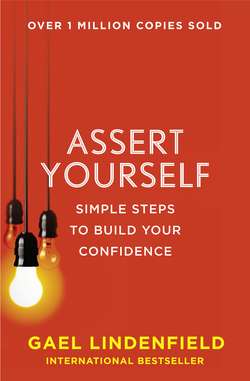Читать книгу Assert Yourself: Simple Steps to Build Your Confidence - Gael Lindenfield, Gael Lindenfield - Страница 12
ОглавлениеCHAPTER 2
The Essence of Assertiveness
What is the Difference Between Aggression, Passivity and Assertion?
Every person at some time has to cope with a problem. I have always found it very useful to spend a considerable amount of time helping people to distinguish between three ways of behaving when they are facing a problem.
Two basic instinctual responses when encountering a problem are Flight (passivity) and Fight (aggression). Many mental health and relationship problems are caused by an over-reliance on these two basic animal responses.
Man, however, has developed a third response more suited to the solving of the kind of relationship problems he has encountered through community living. This response involves the use of his more sophisticated brain and verbal skills. It is his ability to Discuss, Argue and Negotiate.
Since writing the first edition of this book, I have heard Nelson Mandela talk movingly on just this subject. He is one of my major role-models of assertiveness, but he had to struggle, like me, to find this third way. He talked about how his auto-response to the injustices in South Africa made him want to ‘fight’. He had to learn to control this response and, as he put it, make his brain triumph over his blood. He knew that, however justified his anger was, it would not get him or his people what they deserved and wanted. When he came out of prison, he made a conscious decision to suppress his primitive instinctual response, and use the power of his thinking brain, instead, to plan and direct his actions and behaviour.
This is exactly what assertiveness training is all about. By doing the exercises, either on your own or in a group, we re-train ourselves to adopt this third response in situations where we ‘naturally’ either run away (physically or mentally), or fight back in frustration or rage. Nowadays, no one can be unaware of the dangers of using our fight/flight response too often. During the last decade of the 20th century, the media bombarded us with enough horror stories about the stress this causes. It can and does threaten our bodies, relationships and even our ability to keep a job or drive a car safely. This does not mean that, as I said earlier, there isn’t still a time and a place for the odd scream or an ingratiating smile. Assertiveness is not a cure-all. But it is usually the most effective and least stressful kind of behaviour to choose in 95 per cent of our everyday inter-actions. If it fails to get us what we want and need, we can then make a considered choice to use a more aggressive or passive style.
The first step in taking control of our more primitive and early conditioned aggressive and passive responses is to be-come much more aware of how they look and sound. Of course, we all know the obvious ones. When we shout, we know we are being aggressive, and when we squeak out an unnecessary apology we know we are being passive. But un-fortunately, some unassertive responses emerge in heavily disguised forms.
How often we are all fooled by the person who is ‘all talk and no action’ – or the ‘charming’ person who always manages to make us feel small and useless in their company.
| Unfortunately, sometimes people don’t hear you until you scream. Stephanie Powers |
| THE THREE BEHAVIOURS | ||
| Aggressive | Passive | Assertive |
| Non-Verbal Signals | ||
| Shouting | Whining voice | Calm and controlled voice |
| Loud voice | Clenched, wringing hands | Relaxed posture |
| Pointing finger | Shuffling feet | |
| Folded arms | Downcast eyes | Direct eye contact |
| Still posture | Stoop | Upright |
| Key Words and Sentences – Used with the appropriate Non-Verbal Behaviour | ||
| Aggressive | Passive | Assertive |
| You’d better | Maybe | I |
| … If you don’t | I guess | I think |
| Watch out | I wonder | I feel |
| Come on | Would you mind very much if … | I want |
| Should | Sorry … sorry … sorry |
